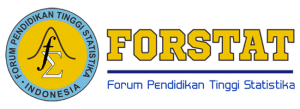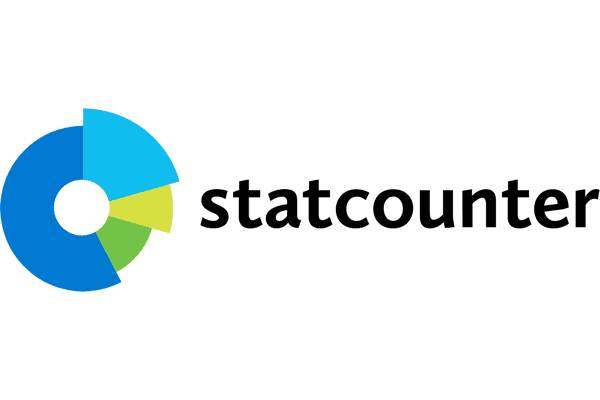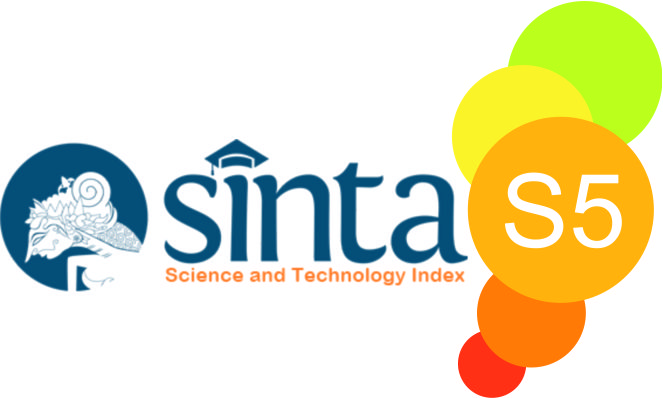Penerapan K-Means Clustering dalam Pengelompokan Data (Studi Kasus Profil Mahasiswa Matematika FMIPA UNM)
(1) Universitas Negeri Makassar
(2) Universitas Negeri Makassar
(3) Universitas Negeri Makassar
(*) Corresponding Author
DOI: https://doi.org/10.35580/jmathcos.v5i2.38820
Abstract
Penelitian ini adalah penelitian terapan yang bertujuan untuk mengetahui cluster yang ada pada mahasiswa jurusan Matematika FMIPA UNM menggunakan K-Means Clustering. Metode penelitian ini adalah studi literatur. Hasil penelitian diperoleh 4 cluster dimana durasi belajar mandiri dan IPK dari tertinggi ke terendah berturut-turut adalah Cluster 1, Cluster 2, Cluster 4, dan Cluster 3. Cluster 1 didominasi mahasiswa SBMPTN, Semester 3, dengan rata-rata berumur 19,20 tahun, durasi belajar mandiri 2,49 jam, 23,97 SKS, IPS 3,69, dan IPK 3,67. Cluster 2 didominasi mahasiswa SBMPTN, Semester 1, dengan rata-rata berumur 18,08 tahun, durasi belajar mandiri 2,07 jam, 22 SKS, dan IPK 3,63. Cluster 4 didominasi mahasiswa MANDIRI, Semester 5, dengan rata-rata berumur 19,78 tahun, durasi belajar mandiri 1,89 jam, 21,62 SKS, IPS 3,48, dan IPK 3,36. Cluster 3 didominasi mahasiswa SBMPTN dan IPS 3,64, SNMPTN bersama-sama, Semester 3, dengan rata-rata berumur 18,52 tahun, durasi belajar mandiri 1,29 jam, 21,87 SKS, IPS 3,13, dan IPK 3,19. Variabel yang paling berpengaruh dalam pembentukan cluster secara berturut-turut adalah Semester, Jumlah SKS, IPK, Umur, IPS, Rata-rata Durasi Belajar Mandiri, dan Jalur Masuk.
Kata Kunci: Cluster, K-Means Clustering, IPK, Durasi Belajar Mandiri.
This research is an applied research that aims to determine the existing clusters in students majoring in Mathematics FMIPA UNM using K-Means Clustering. This research method is literature study. The results obtained 4 clusters where the duration of self-study and the GPA from the highest to the lowest were Cluster 1, Cluster 2, Cluster 4, and Cluster 3. Cluster 1 was dominated by SBMPTN students, Semester 3, with an average age of 19.20 years, duration of independent study 2.49 hours, 23.97 course credits, IPS 3.69, and IPK 3.67. Cluster 2 is dominated by SBMPTN students, Semester 1, with an average age of 18.08 years, independent study duration 2.07 hours, 22 course credits, IPS 3.64, and IPK 3.63. Cluster 4 is dominated by MANDIRI students, Semester 5, with an average age of 19.78 years, duration of independent study 1.89 hours, 21.62 course credits, IPS 3.48, and IPK 3.36. Cluster 3 is dominated by SBMPTN and SNMPTN students together, Semester 3, with an average age of 18.52 years, duration of independent study 1.29 hours, 21.87 course credits, IPS 3.13, and IPK 3.19. The most influential variables in the formation of clusters are Semester, Number of Course Credits, IPK, Age, IPS, Average Duration of Independent Study, and Pathway.
Keywords: Cluster, K-Means Clustering, IPK, Duration of Independent Learning
Full Text:
PDFReferences
Danasla, M. A., Kusuma, G. J., Tuheteru, E. J., & Gautama, R. S. (2021). Analisis Data Hujan Untuk Pengelolaan Air Tambang : Analisis Data Curah Hujan Kejadian Kontinu. Journal of Science, Technology, and Virtual Culture, 107–117.
Dikmen, I., Birgonul, M. T., & Budayan, C. (2009). Strategic Group Analysis in the Construction Industry. Journal of Construction Engineering and Management.
Hair Jr., J. F., Black, W. C., Babin, B. J., & Anderson, R. E. (2009). Multivariate Data Analysis (Seventh Ed). Pearson.
Kassambara, A. (2016). Practical Guide To Principal Component Methods in R (First Edit). STHDA (http://www.sthda.com).
Kassambara, A. (2017). Practical Guide to Cluster Analysis in R (First). STHDA (http://www.sthda.com).
Omar, T., Alzahrani, A., & Zohdy, M. (2020). Clustering Approach for Analyzing the Student’s Efficiency and Performance Based on Data. Journal of Data Analysis and Information Processing, 8.
Rawung, D. T. (2020). Metode Penarikan Sampel. Pusat Pendidikan dan Pelatihan Badan Pusat Statistik.
Sari, D. N. P., & Sukestiyarno, Y. (2021). Analisis Cluster dengan Metode K-Means pada Persebaran Kasus COVID-19 Berdasarkan Provinsi di Indonesia. PRISMA, Prosiding Seminar Nasional Matematika, 602–610.
Sari, Y. R., Sudewa, A., Lestari, D. A., & Jaya, T. I. (2020). Penerapan Algoritma K-Means Untuk Clustering Data Kemiskinan Provinsi Banten Menggunakan Rapidminer. CESS (Journal of Computer Engineering, System and Science), 5(2), 192. https://doi.org/10.24114/cess.v5i2.18519
Tan, P. N., Steinbach, M., & Kumar, V. (2006). Introduction To Data Mining. Pearson Education, Inc.
Wardono, Sunarmi, & Wirawan, M. R. (2019). Pengelompokkan Kabupaten/Kota Di Provinsi Jawa Tengah Berdasarkan Indikator Kesejahteraan Dengan Metode K-Means Cluster. Seminar Nasional Edusaintek, 599–610.
Z
ancanaro, M., Kuflik, T., Boger, Z., Goren-Bar, D., & Goldwwasser, D. (2007). Analyzing Museum Visitors’ Behavior Patterns. International Conference on User Modeling, 238–246. https://doi.org/https://doi.org/10.1007/978-3-540-73078-1_27
Article Metrics
Abstract view : 286 times | PDF view : 4 timesRefbacks
- There are currently no refbacks.
Copyright (c) 2022 JMathCos (Journal of Mathematics, Computations, and Statistics)

This work is licensed under a Creative Commons Attribution-NonCommercial-ShareAlike 4.0 International License.
Indexed by:

This work is licensed under a Creative Commons Attribution-NonCommercial-ShareAlike 4.0 International License.











